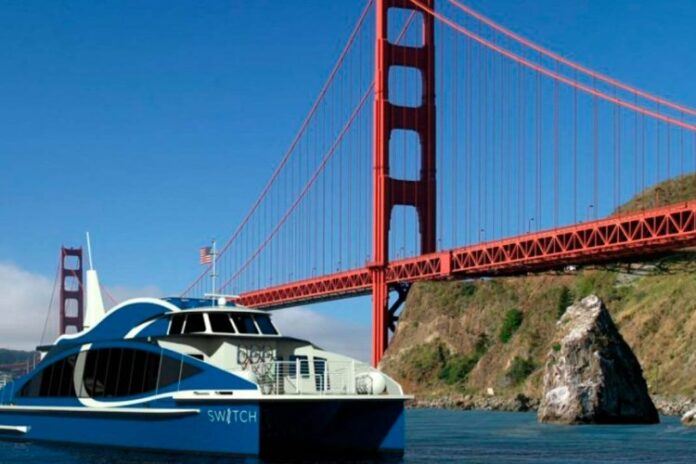Aptly named Sea Change, the 70-foot (21-meter) 75-passenger ferry will serve multiple stops along the San Francisco waterfront. She was built at the All American Marine Shipyard in Bellingham, Washington, and was undergoing trials with the US Coast Guard in nearby Puget Sound.
Pace Ralli, CEO of Switch Maritime, standing on the bow of the ferry in Bellingham Bay, said:
“We’re here on the water, powered by hydrogen fuel cell and it’s the first commercial ship in the world to have that propulsion system.”
Sea Change marks another industry exploring fuel cells as clean energy cars, trucks, trains and recreational boats are developed.
Proponents claim that hydrogen fuel cells are cleaner than other carbon reduction methods, emitting only water and heat, but high-cost and bulky fuel cell systems have limited the use of the technology.
Ralli conceived the idea for the fuel cell-powered ferry while living in New York City, trying to find ways to decarbonize the maritime industry.
Ralli said:
“There was a project in California sponsored by the California Air Resources Board, and they were working on hydrogen fuel cells as a method of decarbonizing ships, so we joined them and funded their project in 2019.”
As he spoke, three stacks of hydrogen fuel cells hummed in the engine room, helping to drive two propellers that move the shuttle to a top speed of 20 knots. All American Marine project manager Jeff Sokolik led Sea Change, pressing buttons on a touch screen that activate automated systems that communicate with the engine room.
Sokolik, who believes this green maritime innovation could be widely adopted within 10 years, said:
“This will be the next standard in fuel cell powered vessels. They’re clean, they’re efficient and they make economic sense at scale.”
As companies move towards a world without emissions, the desire to achieve their sustainability goals has increased.
The 2020 International Maritime Organization Greenhouse Gas Study states that greenhouse gas emissions, including carbon dioxide, methane, and nitrous oxide, increased from 977 million tons in 2012 to 1,076 million tons. tons in 2018, an increase of 9.6% in six years.
Ralli said:
“We focus on the shipping industry because that’s where we have experience, but I don’t think any industry can really wait right now. We are really paving the regulatory framework that is needed to bring this to a larger port vessel, whether it be tugboats and other larger ferries or even ocean going vessels like container ships, cruise ships and oil tankers.”
If all goes according to plan, Ralli said the ship will deliver to the Bay Area in late May and serve passengers in June, just in time for San Francisco’s summer season.
Source: Reuters



